The Livestock in Low Input Systems Conference organised by the Scottish Organic Producers Association (SOPA) and Organic Farmers and Growers (OF&G) took place on 15 June on the farm of Charley and Andrea Walker at Barnside Farm in the Scottish Borders. The focus of the day was on “Farming for lifestyle: how a work-life balance can be achieved without sacrificing farm profit”.
The Walkers have been on Barnside Farm since 2001 converting to an organic system in 2004. The farm is 625ac in total, with 480ac of this described as improved and permanent pasture. The aim of the farm is to produce easily managed, productive cattle and sheep by running a low-cost, simple system which leaves a respectable margin and time for family and social life.
Speaking at the event, Andrea Walker admitted that is not always easy to find the balance. “Finding the balance has always been a challenge but we do make time to go to social and sporting events.”
The team that Charley and Andrea form along with their kids Tom and Jessica is impressive to say the least. Both of them are capable of carrying out any of the jobs on the farm, there are no designated roles, although like everything, they each have their strengths and weaknesses according to Andrea. “Where I would be more of the do-er, Charley is definitely the dreamer!”
“We stopped watching things happen on this farm and started making things happen,” she said, “but the farm is still a work-in-progress. We are rarely without an ongoing project.”
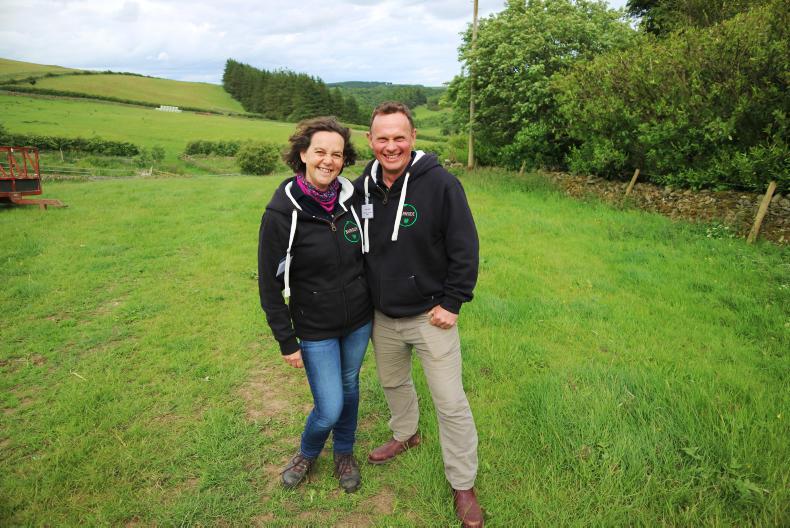
Andrea and Charley Walker from Barnside Farm hosted the Livestock in Low Input Systems Conference.
Ease of
management
There are currently just five groups of stock on the farm, incorporating an 800-ewe and 220-hogg flock along with a 90-cow, spring-calving herd.
“We have recently moved to a three-bull herd which has made management a bit easier,” according to Charley.
“We have two groups of 30 cows and calves following groups of ewes and lambs. We then have another group of first calvers and maiden heifers that will be in a group by themselves, not following sheep. This means that we can be a bit nicer to them.
“I would be tempted to put all the cows in together and run them as one group but we will have to put a bit more thought into it before we do that,” Charley admitted.
One of the main drawbacks to a system like that would be multi sire mating and it’s effect on breeding decisions although that is not insurmountable. In addition the cows would have to move to daily breaks as opposed to two day breaks so the logistics and commitment needed would have to be addressed.
Easy Care sheep
Before moving to Barnside Farm, Charley and Andrea farmed on a lot of fragmented land, with one of the most labour-intensive jobs that they carried out being shearing. For this reason they moved towards Easy Care sheep that shed their wool, eliminating the need to shear.
Charley explains: “All sheep are wool shedders now. We went into Easy Care sheep in 2007, we had New Zealand Romneys before that.
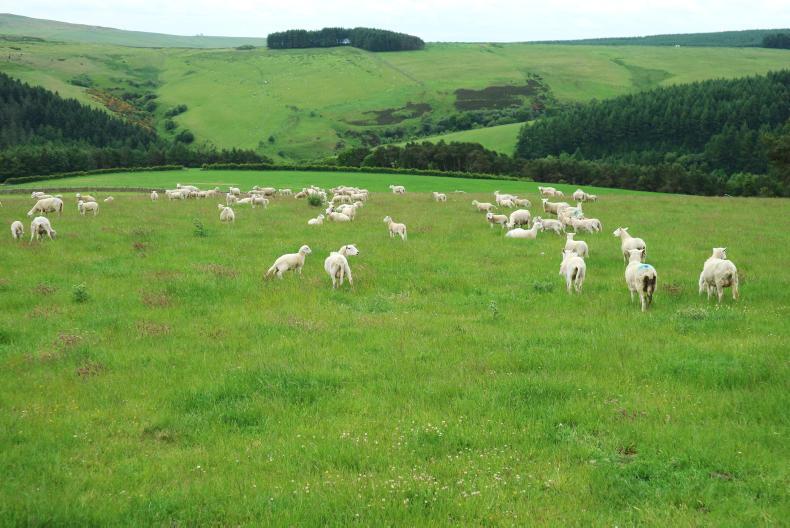
A leader-follower grazing system is generally operated on the farm with ewes and lambs moving ahead of cows and calves.
“People might not like the look of the Easy Care sheep but if you can breed a sheep that makes you money and causes little hassle then you’ll get to like the look of them. Sheering, clipping tails, they are not jobs that I miss,” Charley said.
“Over the years if we had any stock that had any issues we would generally get rid of them which helped to iron out a lot of the issues. We also have a B flock where all progeny will go for finishing, with nothing kept for breeding.”
Ensuring a tight calving and lambing spread is vital to ensure the system can be as efficient as possible for the rest of the year, according to Charley: “Calving will start around 1 April and run for seven weeks. Lambing will then start around 20 April and with the tups generally going in with the ewes for 25-28 days it means that it is as tight as we can make it.
“Lambing is a bit later with the aim to get three to five weeks of pre-lambing nutrition from grass. There is really only two of us here most of the time so it is a real drag if lambing or calving runs on too long.”
Rotational grazing
Rotational grazing is operated on the farm with the farm split into eight grazing blocks and three wintering areas. Each of the grazing blocks is further subdivided into eight to 12 3ha paddocks which are grazed in rotation. Stock will generally spend two days in each paddock, giving each block a 24-day rotation which gives a paddock 22 days regrowth. However, the move to a rotational grazing system has not been all plain sailing.
“2015 was the second year of the rotational grazing. We had major issues with selenium and cobalt. So from then on we started using smart trace boluses for all the lambs. The problem was probably always there looking back as the end of June, early July performance would not be as good as the rest of the year. The rotational grazing just increased the issue.”
Rotational grazing has led to a massive increase of output from the farm over the past five years with the kg of stock carried increasing 35% in this period. It has also seen the total kg of liveweight produced from the farm increase by 45%.
“It makes sense to maximise the dry matter that we can grow on the farm. We grow 7.5 to 7.75t/DM/ha each year so there is scope for improvement there too,” according to Charley.
“Traditionally a lot of the farm would have low-pH soil and while it has been addressed over the years there was probably more that could have been done before the farm became more intensive.
“We may have put the cart before the horse a bit when we started rotational grazing in relation to pH. Should we have spent more on lime before we started rotational grazing?”
Leader-follower system
“We operate a mixed grazing or a leader-follower system. The ewes and lambs will go ahead with the cows and calves cleaning up after them. With leader-follower you are walking the line between pasture residual and animal performance. We are still concerned about worms so we are not fully mixed grazing. I would be keen to try fully mixed grazing from a pasture management point of view.”
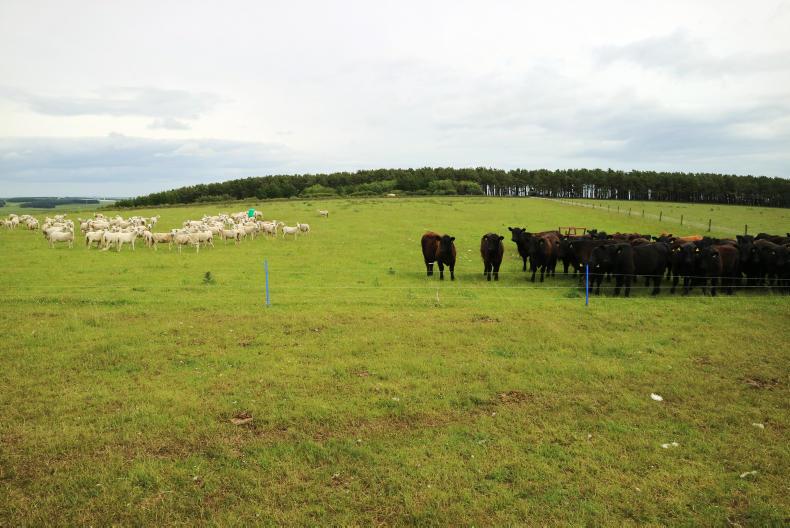
Mixed grazing of hoggs and store cattle in operation.
Running an organic system means that the focus on the farm has to be about disease prevention. “We are very concerned about clean grazing for lambs,” according to Charley. This is in a bid to keep the worm burden low in lambs.
“We wean lambs in the first week of August with all lambs then going to another farmer who grows red clover pastures where the lambs can be finished. Lambs will then be finished off the red clover right up until November. Anything that is not finished at that stage will go to the mart.
“The plan for the future is to maybe reduce the size of the paddocks, down to 2ha which would maybe give us more control over the groups. The water troughs are mainly already in place so it would just take a few more fences.”
Suckler herd
Having a herd that is as little hassle as possible is key to the Walkers. “In 2017 we had 68 cows calved and we didn’t have to touch one of them and they all had a live calf.
“Within 24-36 hours calves will be tagged with the bulls also getting ringed. When we are doing this all cows will get a score for their temperament. Andrea is very keen on the temperament whereas I might be willing to give a cow another chance, she will not.
After this the next handling of the cows – unless there is something wrong – is in September when they are scanned, according to Charley.
“When we weighed them last summer the cows had an average weight of 612kg but I would say the average weight now is nearer 650kg. We think it is easier to achieve efficiency with smaller cows, I wouldn’t want cows to be any bigger.

The target is for cows to be an average weight of 650kg. Cows are Welsh Black or Angus cross.
“We are always trying something new and last year we tried weaning at 150 to 180 days to make management of the group easier in the autumn, we would have traditionally been very late weaning, with calves on cows in February in some years.
“We do like to keep cows in good condition all winter and some people might be worried with that when it comes to calving, but they get plenty of exercise so there are no issues with calving. We try and calve heifers at two years old but because we have been expanding over the past few years it doesn’t always happen as some just aren’t at the weights we would like at breeding.”
For Charley, bull selection is key to the low-input system working for them.
“We select bulls on EBV but also on the breeder and where they come from. The bulls we get come from Andrew Elliot of Blackhaugh, who runs a very grass-based system with minimal concentrate feeding. They cope well when they come to this system. We have mainly Welsh Black cows but we have started using Angus bulls for the past few years and will probably stick with them.”
The work-life balance is key to both Charley and Andrea and it is one of the main reasons why feeding trailers are used for winter feeding of silage. “We have enough trailers that we can fill them up and put them out for a week and it means that we don’t have to be worrying about feeding them every day. It means that we can get away off the farm to a rubgy match or whatever might be on.
“The sheep will generally be fed twice a week. However, when the storm came earlier in the year we could put 54 bales out and not worry about them, we knew that no matter what they would have plenty of feed.
“The feeding trailers just offer so much flexibility and can be easily topped up. Every out-wintering field has a contingency that cows can go to if weather conditions are bad.”
Young stock will generally get out as a mob to grass from mid-March to early April. They will all be sold privately off the farm from August to October to one buyer.
The next step on the farm is identified as moving towards finishing cattle organically although Charley admits that: “We might need to refocus our system but it is something I would love to do.
What do you want your life to look like?
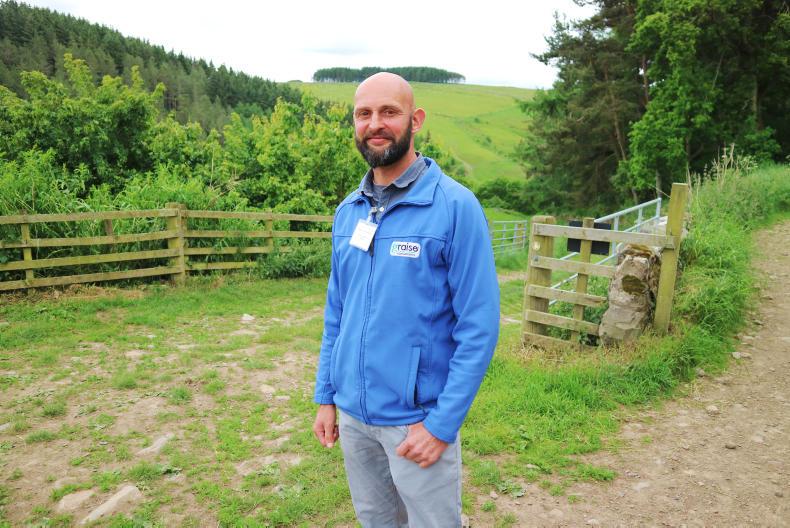
Andre Van Barneveld from Graise Consultancy.
Andre Van Barneveld from Graise Consultancy was also speaking at the conference on finding the balance in work and life.
“You have to ask yourself what is it all about. At the end of the day you want to be making money but you want to be happy too. There are a few key drivers to achieving this. The first is to have a written plan. Figure out why you are doing what you are doing, then ask yourself what you would like your day to look like in five, 10, 15 years’ time. If you can figure that out you can work backwards from there.
“Next you need to have financial projections of at least five years. This will let you know if the plan is achievable and will give you peace of mind. You also need to work out the worst-case scenario.
“The third thing you need is strict rules around time off, holidays and family time.”
The importance of spending time with family was something that Andre stressed several times. However, some people can fall into the trap of working excessive hours.
“For some people they might think they are the provider and convince themselves that they are happy to be working 16-hour days. It is only 10-20 years down the line that you will realise all that you have sacrificed.”
“Your three greatest assets on your farm are; your soil health; your animal health/resistance and your own mental health,” according to Andre.
“However, the first two aren’t worth anything if you don’t have the last one. When you have a year like this one, mental health is so important, you need to have somebody to reach out to and talk to.”
Andre also highlighted the importance of grass in the diet of livestock. “Farmers need to recognise the value of pasture. Grass should be one of the first things that we look at. Look at the different times of the year when there are surpluses and deficits and what you can do with it.
“Work with reseeds and pasture systems that work with the system you want to run. The drive to expand does not always have to be about having more cows or ewes, it could be about becoming more efficient with what you have.”
Andre finished up by leaving those in attendance with two scenarios to ponder.
“What will your kids remember in 10 to 20 years’ time? Will they remember that year when you worked so hard all year and we didn’t see you much but you sold over 500kgLW/ha?
“Or will they remember that time we had a couple of days and slept in a tent at the edge of a forest by the lake and cooked over an open fire?”
The Livestock in Low Input Systems Conference organised by the Scottish Organic Producers Association (SOPA) and Organic Farmers and Growers (OF&G) took place on 15 June on the farm of Charley and Andrea Walker at Barnside Farm in the Scottish Borders. The focus of the day was on “Farming for lifestyle: how a work-life balance can be achieved without sacrificing farm profit”.
The Walkers have been on Barnside Farm since 2001 converting to an organic system in 2004. The farm is 625ac in total, with 480ac of this described as improved and permanent pasture. The aim of the farm is to produce easily managed, productive cattle and sheep by running a low-cost, simple system which leaves a respectable margin and time for family and social life.
Speaking at the event, Andrea Walker admitted that is not always easy to find the balance. “Finding the balance has always been a challenge but we do make time to go to social and sporting events.”
The team that Charley and Andrea form along with their kids Tom and Jessica is impressive to say the least. Both of them are capable of carrying out any of the jobs on the farm, there are no designated roles, although like everything, they each have their strengths and weaknesses according to Andrea. “Where I would be more of the do-er, Charley is definitely the dreamer!”
“We stopped watching things happen on this farm and started making things happen,” she said, “but the farm is still a work-in-progress. We are rarely without an ongoing project.”

Andrea and Charley Walker from Barnside Farm hosted the Livestock in Low Input Systems Conference.
Ease of
management
There are currently just five groups of stock on the farm, incorporating an 800-ewe and 220-hogg flock along with a 90-cow, spring-calving herd.
“We have recently moved to a three-bull herd which has made management a bit easier,” according to Charley.
“We have two groups of 30 cows and calves following groups of ewes and lambs. We then have another group of first calvers and maiden heifers that will be in a group by themselves, not following sheep. This means that we can be a bit nicer to them.
“I would be tempted to put all the cows in together and run them as one group but we will have to put a bit more thought into it before we do that,” Charley admitted.
One of the main drawbacks to a system like that would be multi sire mating and it’s effect on breeding decisions although that is not insurmountable. In addition the cows would have to move to daily breaks as opposed to two day breaks so the logistics and commitment needed would have to be addressed.
Easy Care sheep
Before moving to Barnside Farm, Charley and Andrea farmed on a lot of fragmented land, with one of the most labour-intensive jobs that they carried out being shearing. For this reason they moved towards Easy Care sheep that shed their wool, eliminating the need to shear.
Charley explains: “All sheep are wool shedders now. We went into Easy Care sheep in 2007, we had New Zealand Romneys before that.

A leader-follower grazing system is generally operated on the farm with ewes and lambs moving ahead of cows and calves.
“People might not like the look of the Easy Care sheep but if you can breed a sheep that makes you money and causes little hassle then you’ll get to like the look of them. Sheering, clipping tails, they are not jobs that I miss,” Charley said.
“Over the years if we had any stock that had any issues we would generally get rid of them which helped to iron out a lot of the issues. We also have a B flock where all progeny will go for finishing, with nothing kept for breeding.”
Ensuring a tight calving and lambing spread is vital to ensure the system can be as efficient as possible for the rest of the year, according to Charley: “Calving will start around 1 April and run for seven weeks. Lambing will then start around 20 April and with the tups generally going in with the ewes for 25-28 days it means that it is as tight as we can make it.
“Lambing is a bit later with the aim to get three to five weeks of pre-lambing nutrition from grass. There is really only two of us here most of the time so it is a real drag if lambing or calving runs on too long.”
Rotational grazing
Rotational grazing is operated on the farm with the farm split into eight grazing blocks and three wintering areas. Each of the grazing blocks is further subdivided into eight to 12 3ha paddocks which are grazed in rotation. Stock will generally spend two days in each paddock, giving each block a 24-day rotation which gives a paddock 22 days regrowth. However, the move to a rotational grazing system has not been all plain sailing.
“2015 was the second year of the rotational grazing. We had major issues with selenium and cobalt. So from then on we started using smart trace boluses for all the lambs. The problem was probably always there looking back as the end of June, early July performance would not be as good as the rest of the year. The rotational grazing just increased the issue.”
Rotational grazing has led to a massive increase of output from the farm over the past five years with the kg of stock carried increasing 35% in this period. It has also seen the total kg of liveweight produced from the farm increase by 45%.
“It makes sense to maximise the dry matter that we can grow on the farm. We grow 7.5 to 7.75t/DM/ha each year so there is scope for improvement there too,” according to Charley.
“Traditionally a lot of the farm would have low-pH soil and while it has been addressed over the years there was probably more that could have been done before the farm became more intensive.
“We may have put the cart before the horse a bit when we started rotational grazing in relation to pH. Should we have spent more on lime before we started rotational grazing?”
Leader-follower system
“We operate a mixed grazing or a leader-follower system. The ewes and lambs will go ahead with the cows and calves cleaning up after them. With leader-follower you are walking the line between pasture residual and animal performance. We are still concerned about worms so we are not fully mixed grazing. I would be keen to try fully mixed grazing from a pasture management point of view.”

Mixed grazing of hoggs and store cattle in operation.
Running an organic system means that the focus on the farm has to be about disease prevention. “We are very concerned about clean grazing for lambs,” according to Charley. This is in a bid to keep the worm burden low in lambs.
“We wean lambs in the first week of August with all lambs then going to another farmer who grows red clover pastures where the lambs can be finished. Lambs will then be finished off the red clover right up until November. Anything that is not finished at that stage will go to the mart.
“The plan for the future is to maybe reduce the size of the paddocks, down to 2ha which would maybe give us more control over the groups. The water troughs are mainly already in place so it would just take a few more fences.”
Suckler herd
Having a herd that is as little hassle as possible is key to the Walkers. “In 2017 we had 68 cows calved and we didn’t have to touch one of them and they all had a live calf.
“Within 24-36 hours calves will be tagged with the bulls also getting ringed. When we are doing this all cows will get a score for their temperament. Andrea is very keen on the temperament whereas I might be willing to give a cow another chance, she will not.
After this the next handling of the cows – unless there is something wrong – is in September when they are scanned, according to Charley.
“When we weighed them last summer the cows had an average weight of 612kg but I would say the average weight now is nearer 650kg. We think it is easier to achieve efficiency with smaller cows, I wouldn’t want cows to be any bigger.

The target is for cows to be an average weight of 650kg. Cows are Welsh Black or Angus cross.
“We are always trying something new and last year we tried weaning at 150 to 180 days to make management of the group easier in the autumn, we would have traditionally been very late weaning, with calves on cows in February in some years.
“We do like to keep cows in good condition all winter and some people might be worried with that when it comes to calving, but they get plenty of exercise so there are no issues with calving. We try and calve heifers at two years old but because we have been expanding over the past few years it doesn’t always happen as some just aren’t at the weights we would like at breeding.”
For Charley, bull selection is key to the low-input system working for them.
“We select bulls on EBV but also on the breeder and where they come from. The bulls we get come from Andrew Elliot of Blackhaugh, who runs a very grass-based system with minimal concentrate feeding. They cope well when they come to this system. We have mainly Welsh Black cows but we have started using Angus bulls for the past few years and will probably stick with them.”
The work-life balance is key to both Charley and Andrea and it is one of the main reasons why feeding trailers are used for winter feeding of silage. “We have enough trailers that we can fill them up and put them out for a week and it means that we don’t have to be worrying about feeding them every day. It means that we can get away off the farm to a rubgy match or whatever might be on.
“The sheep will generally be fed twice a week. However, when the storm came earlier in the year we could put 54 bales out and not worry about them, we knew that no matter what they would have plenty of feed.
“The feeding trailers just offer so much flexibility and can be easily topped up. Every out-wintering field has a contingency that cows can go to if weather conditions are bad.”
Young stock will generally get out as a mob to grass from mid-March to early April. They will all be sold privately off the farm from August to October to one buyer.
The next step on the farm is identified as moving towards finishing cattle organically although Charley admits that: “We might need to refocus our system but it is something I would love to do.
What do you want your life to look like?

Andre Van Barneveld from Graise Consultancy.
Andre Van Barneveld from Graise Consultancy was also speaking at the conference on finding the balance in work and life.
“You have to ask yourself what is it all about. At the end of the day you want to be making money but you want to be happy too. There are a few key drivers to achieving this. The first is to have a written plan. Figure out why you are doing what you are doing, then ask yourself what you would like your day to look like in five, 10, 15 years’ time. If you can figure that out you can work backwards from there.
“Next you need to have financial projections of at least five years. This will let you know if the plan is achievable and will give you peace of mind. You also need to work out the worst-case scenario.
“The third thing you need is strict rules around time off, holidays and family time.”
The importance of spending time with family was something that Andre stressed several times. However, some people can fall into the trap of working excessive hours.
“For some people they might think they are the provider and convince themselves that they are happy to be working 16-hour days. It is only 10-20 years down the line that you will realise all that you have sacrificed.”
“Your three greatest assets on your farm are; your soil health; your animal health/resistance and your own mental health,” according to Andre.
“However, the first two aren’t worth anything if you don’t have the last one. When you have a year like this one, mental health is so important, you need to have somebody to reach out to and talk to.”
Andre also highlighted the importance of grass in the diet of livestock. “Farmers need to recognise the value of pasture. Grass should be one of the first things that we look at. Look at the different times of the year when there are surpluses and deficits and what you can do with it.
“Work with reseeds and pasture systems that work with the system you want to run. The drive to expand does not always have to be about having more cows or ewes, it could be about becoming more efficient with what you have.”
Andre finished up by leaving those in attendance with two scenarios to ponder.
“What will your kids remember in 10 to 20 years’ time? Will they remember that year when you worked so hard all year and we didn’t see you much but you sold over 500kgLW/ha?
“Or will they remember that time we had a couple of days and slept in a tent at the edge of a forest by the lake and cooked over an open fire?”









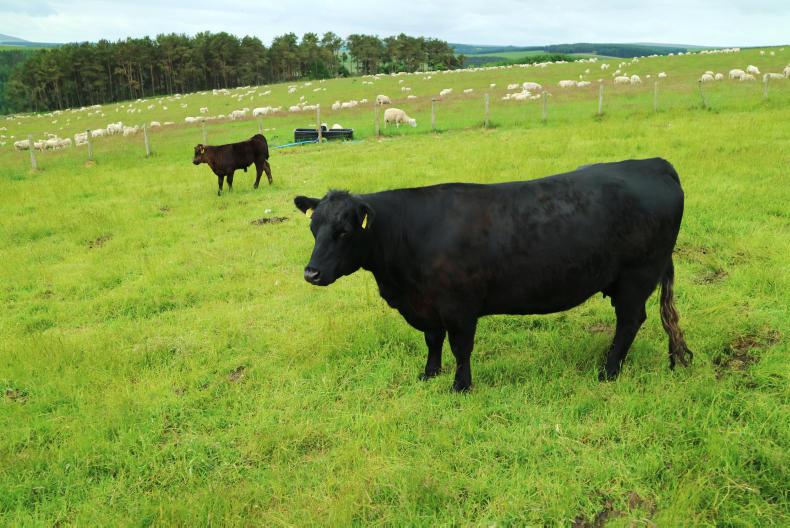
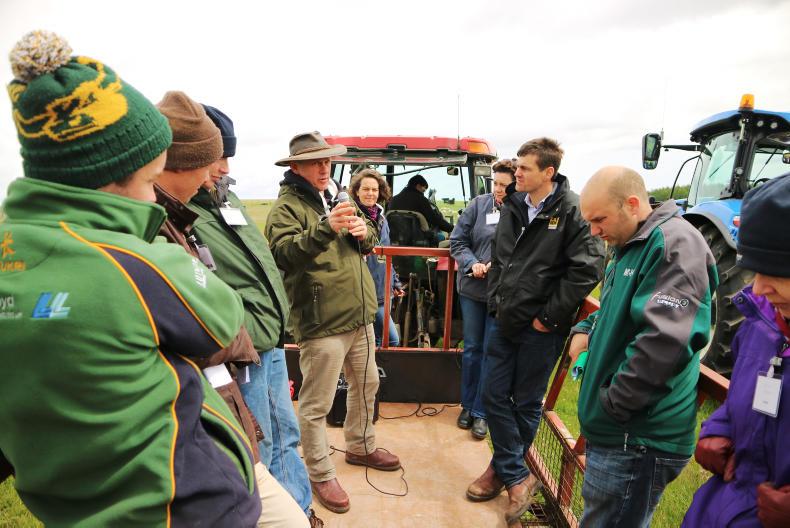

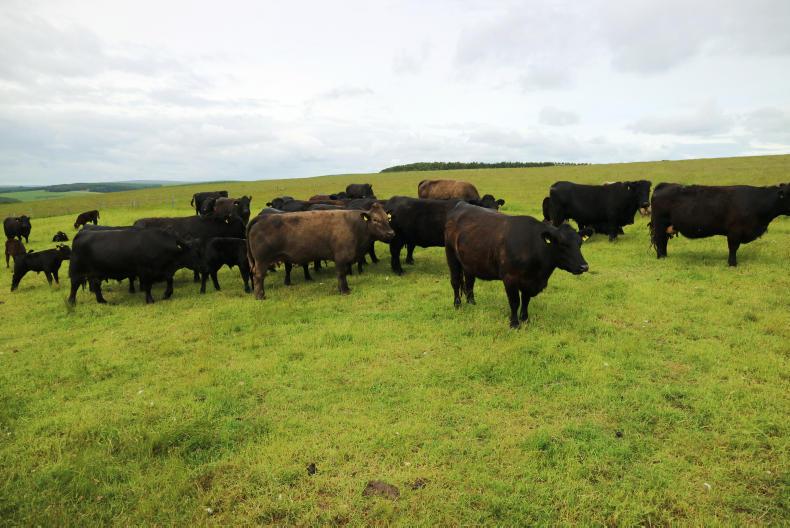



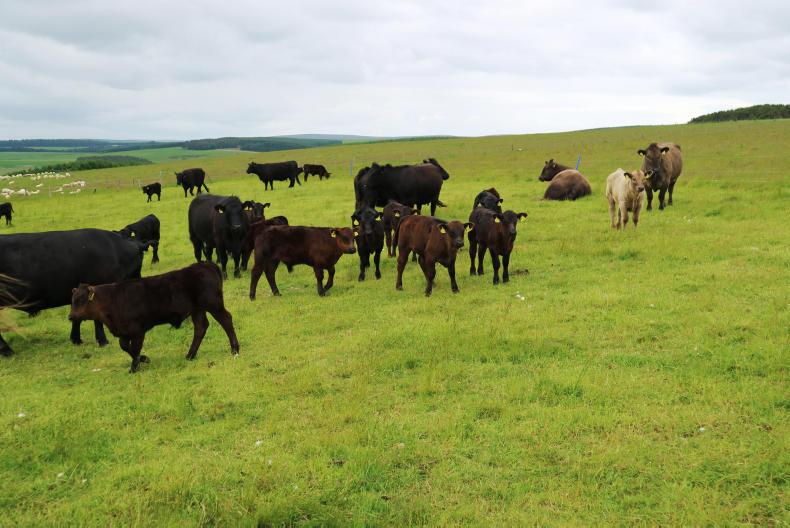
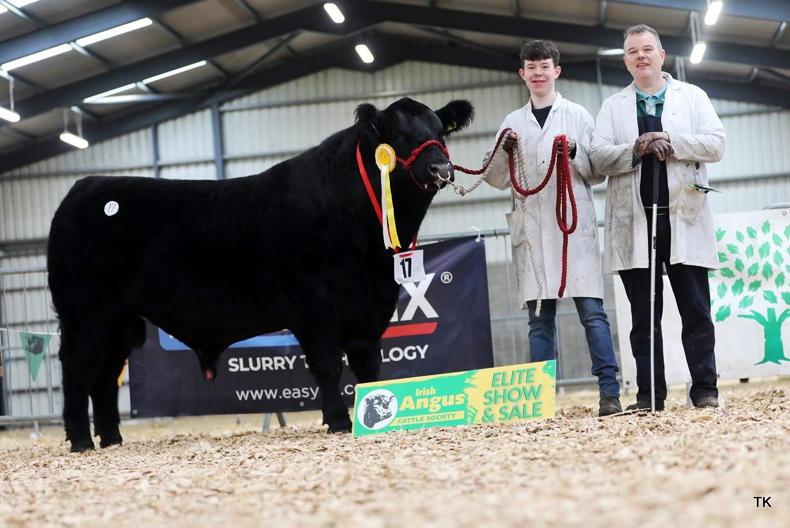
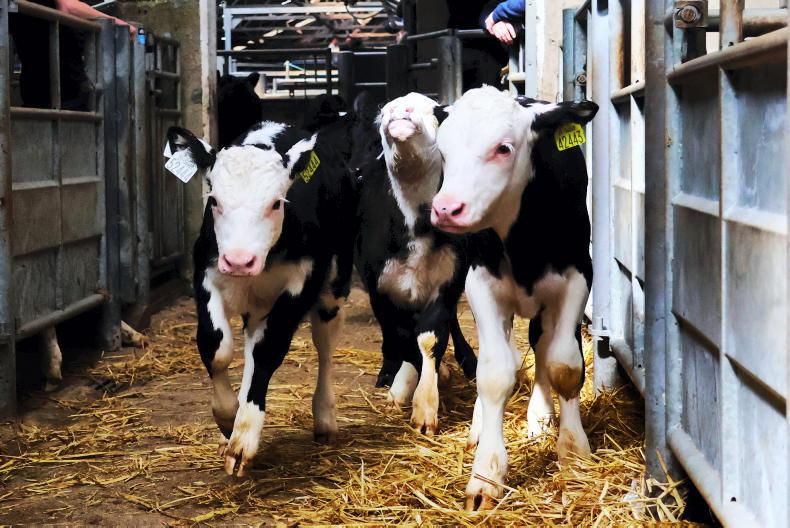
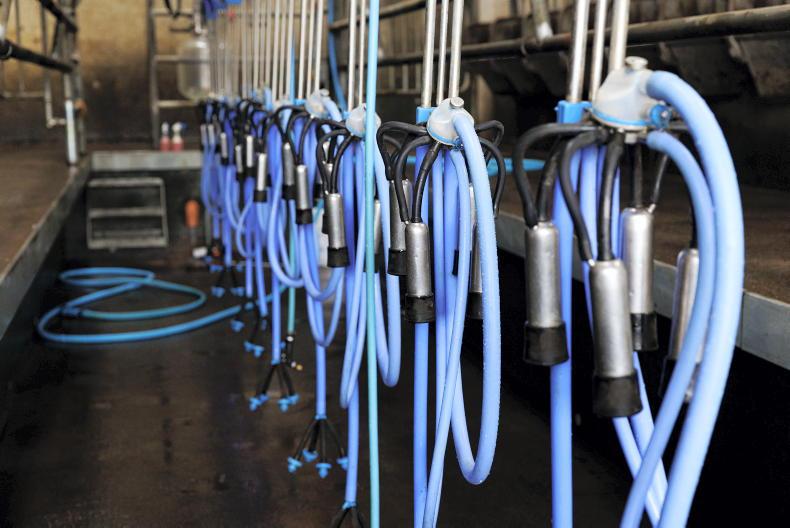

SHARING OPTIONS